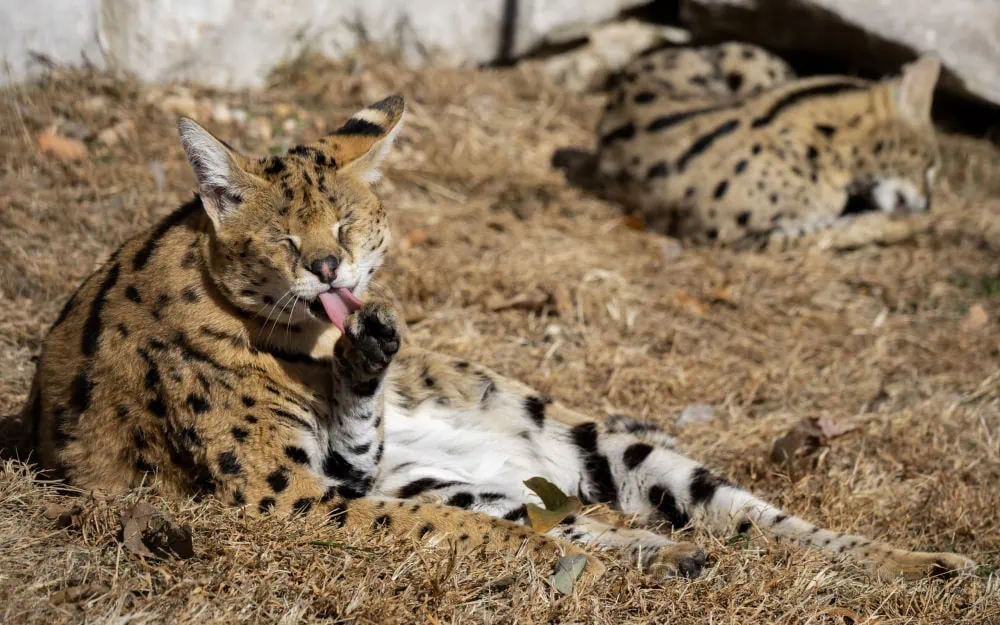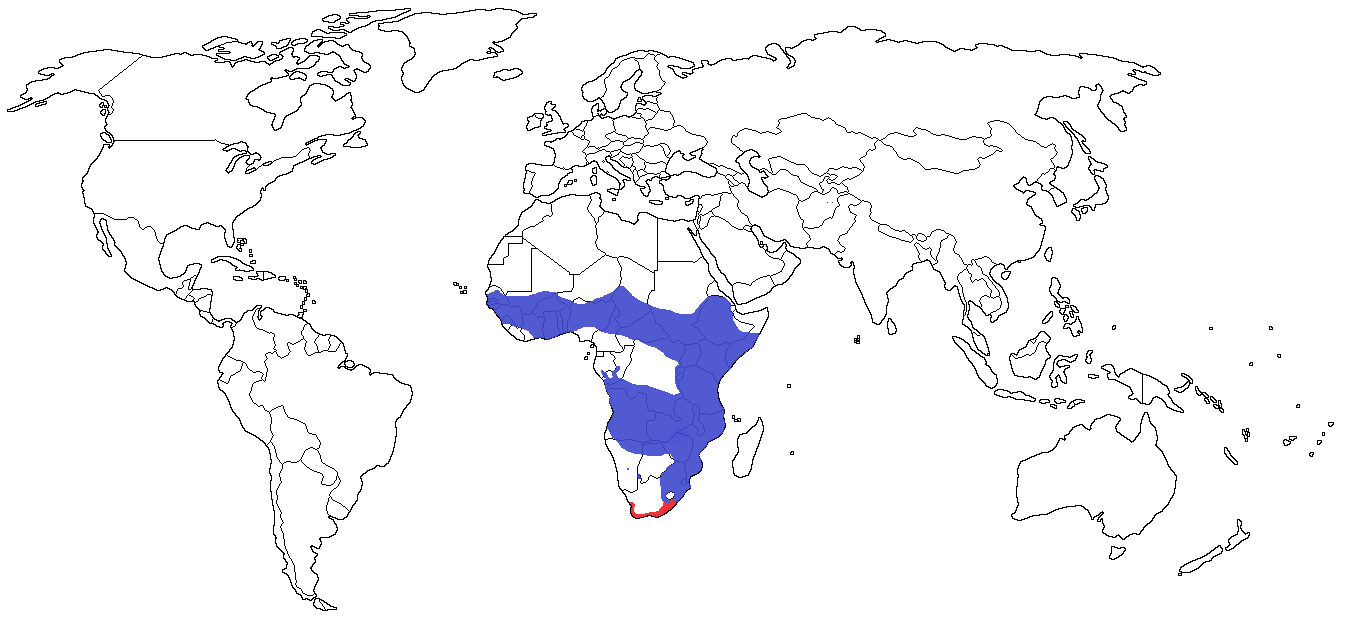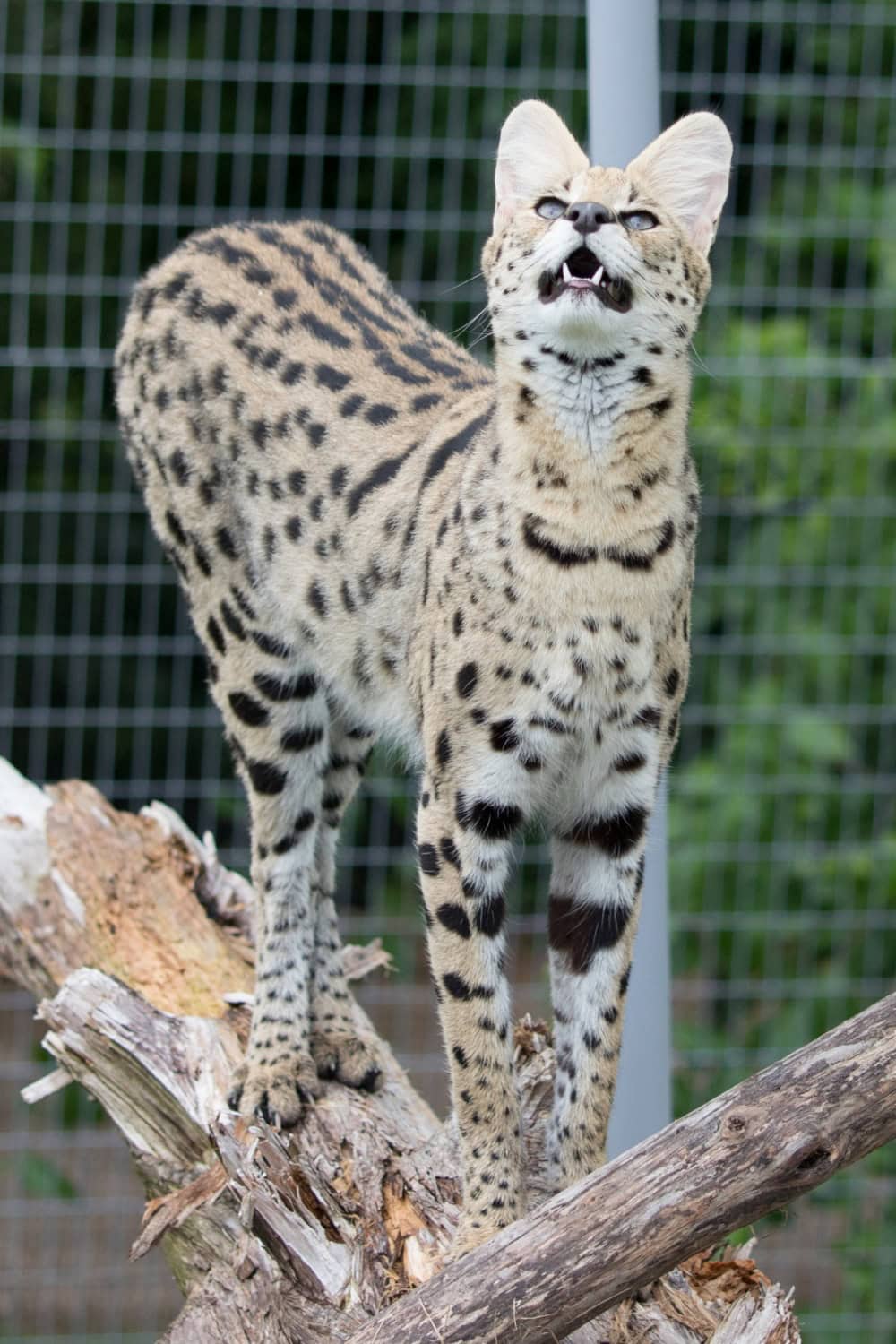
Taxonomy
Kingdom: Animalia
Phylum: Chordata
Class: Mammalia
Order: Carnivora
Family: Felidae
Subfamily: Felinae
Genus: Leptailurus
Species: serval
Scientific Name: Leptailurus serval
IUCN Red List Status: Least Concern
About
Habitat: Servals are widely distributed across Africa south of the Sahara Desert and are therefore very adaptable. Servals are not found living in rainforests or true deserts. They do prefer temperate and tropical forests with access to lots of water and cover in the form of tall grass, reeds, or other wetland vegetation. They can often be found taking cover in medium to tall grass in well-watered areas (i.e., river reed beds, swamps, open woodlands, and forest edges).

Territoriality: Servals are polygynous, many females to a single male, and the territories of different sexes do not overlap. Typically, the only exception to this solitary trend is mating season. On occasion, servals will be found in pairs, or a female will live in a group with her kittens.
A serval’s territory boundaries are clearly outlined by frequent scent-marking and scraping. They are known for spraying, urinating, frequently throughout their habitats to mark their territories.
Lifespan
In the Wild: 10-20 years
In Captivity: 10-20 years
Population
An estimated 50,000
Physical Description
Weight: 30-40 pounds
Length: 23-36 inches long, 16-26 inches tall
Servals are slender, long-legged African cats with slim faces and large oval-shaped ears. They have the longest ears and legs in comparison to their body size of any cat species. Their coat colors can range from a pale yellow to a reddish-copper with black spots that vary in size among each individual. Some of these spots join into stripes going down the serval’s neck and back to form rings that wrap around the tail. Their underbellies are typically whitish-yellow and unmarked. Their large ears are black with a white “eye spot” on the back.

History
The name serval was derived from a Portuguese word meaning “wolf-deer” due to its elongated features. They have incredibly long legs, ears, and necks with a small head. Their long legs and neck allow them to look over the tall savannah grass to find their prey. During the day, these cats rest in abandoned burrows or underneath a shady bush to conserve energy for the next hunt.
Wild servals exist in 35 countries across Africa, with an estimated population of 50,000 mature breeding individuals. But, there is an ever-growing captive population of servals that exist across the world. An unknown, yet substantial, number of servals are held in captivity and bred to be sold as pets. They are also bred with domesticated house cats to create small cat hybrids called Savannah cats. This captive breeding and exploitation is not only detrimental to the health of the animal but is also an extreme danger to the humans involved, as these are still wild animals.
Reproduction
Gestation Period: 73 days
Litter size: 1-5 kittens (2-3 average)
While mating can occur year-round, typically it occurs in the spring. The female will raise them by herself, living in well-hidden areas; lairs, dens, hollow trees, or abandoned burrows are a few of the most common hideouts. When hunting, she must leave them alone, and will, therefore, change their hiding-place frequently. When the kittens are six to eight months old, they become independent from their mother and must learn how to fend for themselves.
Fun Facts
- In a typical year, a single serval captures 4,000 rodents, 260 snakes, and 130 birds
- Servals can jump up to 10 feet into the air
- If a human had the same ear to head ratio as a serval, our ears would be the size of dinner plates!
- Servals are inactive almost 40% of each day
Diet and Hunting Behaviors
Servals are opportunistic carnivores that have been known to prey on a wide range of animals such as lizards, snakes, small birds, rodents, fish, and insects. Typically, servals are nocturnal hunters, but they have also been known to be crepuscular or hunting at dawn and dusk. Their hunting is dependent on the prey, as different animals become active at different times of the day. They are generalists that are capable of changing their diets depending on the food that is available to them. A serval’s long legs and large ears make them very successful hunters, catching their prey an estimated 50 percent of the time. They heavily rely on sound to pinpoint their next meal. Their ears are so sensitive that they can detect the high pitch noises of rodents. Once they hear a noise, they wait patiently to attack until their prey is accurately detected. On the initial blow, the prey will be stunned or killed instantly by being pounced on. If not successful at first, servals will then jump repeatedly onto their prey to kill it. They catch birds and insects by jumping into the air and “clapping” their front paws onto their prey. Servals may also use their incredibly sharp, curved claws to reach into holes and crevices to locate animals detected by their ears. A serval is incredibly versatile and will change hunting tactics depending on the resources available. They have been known to stalk and pounce, leap vertically, hunt in water, dig in burrows, or hunt in trees to have a successful hunt. Because their prey is smaller in size, servals must frequently hunt, especially mothers with kittens. Adult servals can spend 6 hours of the day traveling and hunting.
Kittens are taught to hunt by adults, who allow them to “play with their food.” The prey item is tossed in the air or allowed to scurry away while the youngsters practice. These hunting skills are essential to ensure adolescents’ survival once on their own.
Threats and Conservation
While servals are a prominent small cat species across Africa, it is believed that their populations are at a decline. This decline is due to the degradation of habitat, poaching, or persecution. They depend on high rodent densities of wetlands and grasslands, which are being over-grazed by livestock. The draining of wetlands is one of the biggest threats to these small cats. Servals can also be killed by other large predators such as leopards, hyenas, and lions.
The exotic animal trade is also a considerable threat to the species; they are regularly captured and sold for commercial export to different countries to be sold as pets. Serval pelts are also used and traded in large quantities in some countries. These places include Senegal, Gambia, and Benin, where the pelts are being exported to North Africa. Serval pelts are often used as substitutes for leopard or cheetah skins in traditional clothing as well as the exotic fur trade. Although servals tend to prey upon rodents, which helps local farmers to decrease rodent populations, indiscriminate poison is extremely harmful to the carnivores that prey upon the rodents consuming the poison.
In areas of high human population, servals are becoming habituated, or accustomed to people, and are becoming more at risk due to motor vehicles, tourism, and farming. Increasing human population and agricultural development are causing much more human-wildlife conflict. This conflict is prominent in agricultural areas when local people persecute servals for preying upon poultry or small livestock.